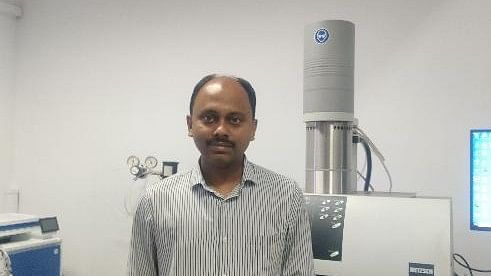
Bengaluru: Researchers at the Jawaharlal Nehru Centre for Advanced Scientific Research (JNCASR) in Bengaluru have synthesised a material that exhibits the properties of both glass and metal and can efficiently convert waste heat to electricity.
The innovation is a significant step forward in ongoing efforts to develop sustainable and environmentally acceptable energy alternatives.
Thermoelectric materials, with their ability to transfer waste heat into useful electricity, are critical to these efforts. Maximising this efficiency to convert energy, however, depends on careful optimisation of both thermal and electrical transport characteristics.
In a recent research paper published in Advanced Materials, Professor Kanishka Biswas from JNCASR’s New Chemistry Unit and his research team presented a material that exhibits metal-like electrical conductivity and glass-like low thermal conductivity, which has never been reported earlier.
The study focuses on synthesising a crystalline material named ytterbium (Yb) doped AgSbTe2, demonstrating unique characteristics in heat and electron transport.
The researchers achieved this by introducing embedded intrinsic nanostructures within the compound. These nanostructures proved effective as heat blockers, selectively allowing the passage of electron waves. The Department of Science and Technology said in a statement that this dual functionality opened possibilities for energy efficiency, particularly in thermoelectric energy conversion.
"While metals such as copper are excellent conductors of both electricity and heat, the newly synthesised material defies this norm by exhibiting metal-like conductivity for electricity, but glass-like behaviour for heat, which is a rare and fascinating result,” Prof Biswas said.
The research can help advance processes in thermoelectric energy conversion, where waste heat from sources like industrial processes in power plants, households and vehicle exhausts can be converted into electricity.
The team has made, as a proof-of-concept, a two-leg device with the material at a ~9% efficiency. The challenge will be in scaling up the device for practical applications. Prof Biswas said a robust semiconductor industry was critical to the mass production of devices based on this material.